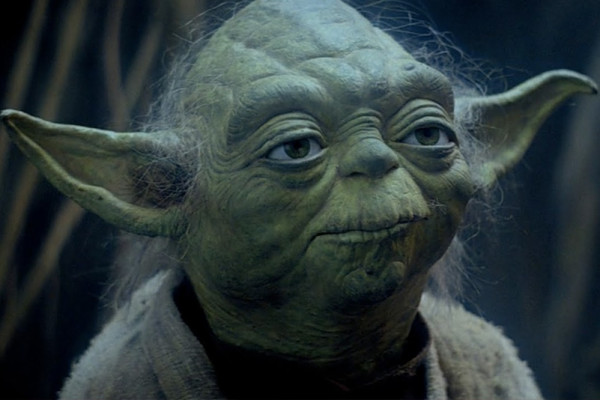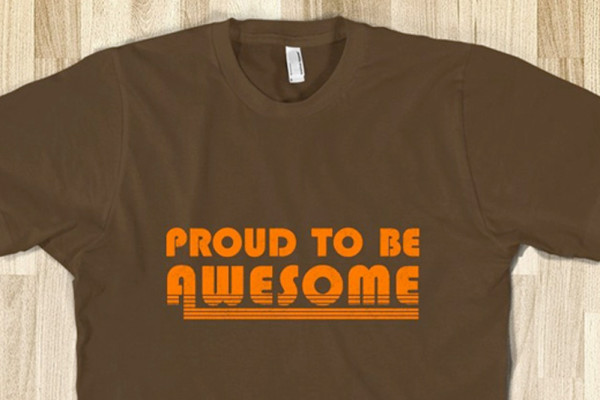In case you haven’t noticed, I’m a huge Star Wars fan. If my parents did anything right, it was introducing me to this classic space opera at a young age. I was about 10 when I first saw Star Wars: A New Hope, and I fell in love with it. The characters and the story stuck with me, as it has for millions of others.
*spoilers ahead. Duh.*
Star Wars’ secret sauce
So this leads us the question: why is Star Wars such a success? Granted, it’s a fun action/adventure flick. The visual effects were groundbreaking 40 years ago, and still are impressive to this day.
But it goes deeper than being merely a movie. The secret, I believe, to its massive intrigue and loyal fan base is simply this: how interconnected the character archetypes are with its mythology.
Huh?
The story behind the original Star Wars trilogy resonates with audiences because it is the retelling of iconic mythological stories.
Star Wars resonates with audiences because it is the retelling of iconic mythological stories. Click To Tweet
Human beings have always, since the dawn of time, been driven to tell and share stories. Think about cavemen telling their children around the campfire about that last wild mammoth hunt they had. Look to the Vikings and their great stories about Thor and Odin, and the Greeks and the Romans all those ages ago. Stories.
We still do it today (“Hey, you won’t believe what happened to me today!”) Stories are a way to convey hidden truths, and to give our lives meaning. Myths resonate on an even deeper level, as they tap into deep, hidden human desires and dreams. With Star Wars, the myth is the Hero’s Journey. So where do archetypes fit in?
Archetypes are a recurrent symbol or motif in literature, art, or mythology. They speak truths and provide meaning to persons and things. Even brands can be archetypes (more on that in a minute).
Archetypes speak truths and provide meaning to persons, things, even brands. Click To Tweet
There have been classically 12 main archetypes: The Hero, the Innocent, the Lover, the Jester, the Caregiver, the Ruler, the Magician, the Creator, the Citizen, the Explorer, the Outlaw, and the Sage. Some of these names are exactly what they sound like, and others are more ambiguous. So how does this tie in to Star Wars, and why should you care?
Archetypes + Star Wars = YASS
Simply put, the original saga is awash in strong archetypes.
Han Solo is the Outlaw. Luke Skywalker is the Citizen turned Hero. Obi Wan is the Sage. C-3PO is the Jester, R2D2 his Innocent companion. Almost every single archetype is represented in the original movies, and I think that is one of the key reasons why they have been such a success.
Strong characters make for an interesting and compelling story. Your good guy is only as strong as your bad guy. These archetypes give meaning and structure, as well as conflict and interest, in any good story or myth. And this is where The Force Awakens falls short.
Your good guy is only as strong as your bad guy. #archetypes Click To Tweet
Think about it. So we have Rey. Okay, she’s pretty much Luke’s reflection, Citizen turned Hero. She’s probably the single strongest character in the new movie, but every character introduced after her is a muddled or confusing archetype, or just plain recycled. Han Solo reprises his role as the Outlaw, but I suspect we’re supposed to see Poe as the new Outlaw. He tries. But honestly, he’s no Solo. He gets captured right away and has to be rescued. We don’t see a lot of him either, are we supposed to care about this guy?
And then there’s Finn…I’m honestly not sure what he’s supposed to be, but judging from his actions and words the closest archetype that fits him is…the Jester. He’s whiny and has some funny punchlines, but that’s about it. Maybe he’s supposed to be the Hero too? He did pick up the lightsaber and dueled with Ren, yet was soundly defeated. Who knows.
Remember, a muddled archetype makes for a weak character. The character Finn has too many traits of everything to be definitively one thing that we can relate to.
And then there’s Maz Kanata. I think she’s supposed to be the Sage, but I’m not so sure. Yes, she offers some advice to Rey, but the key thing about the Sage is, they take the Hero under their wing and are essentially their mentor throughout the journey.
Rey’s just passing through, and isn’t even a willing recipient of Maz’s advice. Additionally, the Sage—at least in Star Wars—has been a practitioner of the Force, not just “Force sensitive” (is that like a gluten sensitivity?).
For example, both Obi Wan and Yoda were Jedi. Maz isn’t. And then we see Luke at the very end, and he’s probably going to take over and be the Sage moving forward. But now we have two supposed Sages in one movie. It’s confusing.
Finally, most of the archetypes we’ve seen in the new film simply take on their old role, which is slightly lazy. Princess Leia comes back as the Caregiver. Chewbacca is the Lover (I know it sounds weird, but hear me out: the Lover isn’t always about romance, it can be a loyal friend as well. Chewie always has Han’s back and goes with him everywhere, and is bound to him for life).
The Ruler was Grand Moff Tarkin/the Emperor and is now the Supreme Leader Snoke. The Magician was Darth Vader and is now Emo Kylo Ren. The Creator? The Force, of course.
Those are just a few examples, but hopefully you see the problem here. Star Wars Episode IV had strong characters who carried the story through the use of clearly defined archetypes; Episode VII seemed to forget about the importance of having solid archetypes, and it makes for a weaker movie.
Star Wars archetypes and you
Now, what does Star Wars and archetypes have to do with you and your brand? It’s important not to be in such a rush that you make the same mistakes as Episode VII.
Think about some of the most successful brands out there today. Nike: the Hero. Apple: the Creator. Disney: the Magician. McDonald’s: the Innocent.
Every hugely successful brand has a strong, clearly defined archetype. Click To Tweet
Every single one of them has a strong, clearly defined archetype that they unabashedly follow. If you want your company to be like Star Wars OG, it’d be good to keep that in mind.
The takeaway for your brand: have a strong, clearly defined archetype, and stick with it. There is one, maybe two, archetypes that your company fits into, like a glove. Find it and own it.
Next time I’ll go over exactly how you can do that, and make archetypes work for your brand.





2 Comments. Leave new
Good website and good content! It’s midnight, but I’m still here and reading your blog. It’s really interesting, thanks a lot.
Thanks for reading!